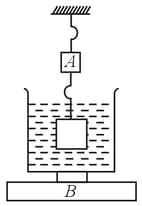A massless vessel containing liquid is placed over smooth horizontal surface. At the bottom of the vessel there exist a hole of cross-sectional area Liquid is flowing out horizontally from the vessel due to which the vessel (cross-sectional area ) accelerate. What is the acceleration (approximately) of the vessel when half of the liquid is drained out from the vessel? ( acceleration due to gravity)
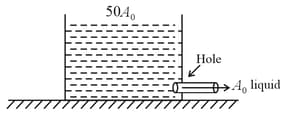


Important Questions on Mechanical Properties of Fluids
Consider a small soap bubble inside a large container having soap solution. Force due to half of soap bubble on half due to surface tension will be (radius of bubble)
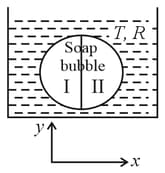
Consider a liquid molecule as shown in diagram. If is the resultant of cohesive forces on this molecule and is the adhesive force on this, then choose the correct statement.

A small spherical object having density is placed inside the liquid of density and connected to an ideal string of length / whose other end is kept fixed so that the object can move in a vertical circle, minimum speed which must be given at the bottom to just complete the vertical circle. [Ignore viscosity or any such other drag forces]

A solid wooden cone has been supported by a string inside a liquid of density , where is density of wood and The radius of circular base of the cone is and height is The base of cone is at depth below the liquid surface. Tension in the string is
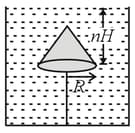
In a soap film experiment an originally semicircle shaped thread of length can be deformed to two semicircles with a force exerted at the middle of the thread as shown. The surface tension of the film is
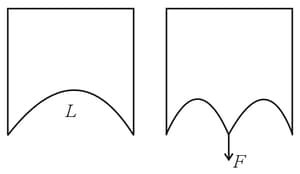
The spring balance reads with a block suspended from it. balance read when a beaker with liquid is put on the pan of the balance. The two balances are now so arranged that the hanging mass is inside the liquid in the beaker as shown in the figure. In this situation
